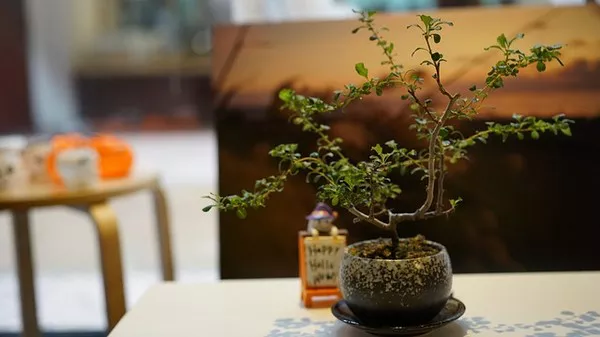The ancient and intricate art of bonsai has captivated enthusiasts worldwide for centuries. Originating in China and later embraced and refined by the Japanese, bonsai involves nurturing and shaping miniature trees to replicate the essence of their full-sized counterparts. The result is a living masterpiece that exudes grace, balance, and a sense of ageless wisdom. In this comprehensive guide, we will explore the step-by-step process of cultivating a bonsai plant, from selecting the right species to mastering the techniques that will help you create your own mesmerizing bonsai tree.
Choosing the Right Species
Before delving into the techniques of bonsai cultivation, it is crucial to choose a suitable tree species for your desired outcome. While almost any woody-stemmed tree or shrub can be transformed into a bonsai, certain species are better suited for beginners due to their resilience and forgiving nature. Some popular choices for novice bonsai enthusiasts include the Chinese Elm (Ulmus parvifolia), Juniper (Juniperus species), and Ficus (Ficus retusa).
Selecting the Perfect Bonsai Pot
The choice of pot plays a significant role in the overall aesthetics of the bonsai. Traditional bonsai pots are typically shallow and unglazed, as they allow for proper drainage and oxygen exchange. However, modern glazed ceramic pots can also be used, depending on the style you wish to achieve. When selecting a pot, ensure that it complements the tree’s size and shape while enhancing its natural beauty.
The Art of Pruning
Pruning is one of the fundamental techniques in bonsai cultivation. It involves selectively removing branches and leaves to achieve the desired shape and size while maintaining the tree’s balanced appearance. Regular pruning encourages the development of fine branches and compact foliage, contributing to the bonsai’s overall harmony and elegance.
To begin, identify the tree’s front side, which should exhibit the most appealing features. Carefully remove any dead, diseased, or damaged branches using clean, sharp pruning shears. Trim branches that grow excessively long and disrupt the desired silhouette of the bonsai. Always remember that less is more; err on the side of caution when pruning, as branches cannot be restored once removed.
Wiring for Shape
Wiring is another essential technique that enables the bonsai enthusiast to shape the tree’s branches with precision. Aluminum or copper wire is used, and it is essential to match the wire gauge to the branch’s thickness to avoid causing damage. The best time to wire a bonsai is during the growing season when the branches are flexible enough to be gently manipulated.
Begin by wrapping the wire at the base of the branch and slowly spiral it upwards, taking care not to bend the wire too tightly, which could lead to bark damage. Shape the branches to your desired form, considering the tree’s natural growth pattern and the intended style, be it formal upright, informal upright, cascading, or windswept, among others. Remove the wire after a few months to prevent it from cutting into the bark as the branch thickens and hardens.
Watering and Feeding
Proper watering and feeding are crucial for the health and vigor of a bonsai tree. Bonsai plants are typically grown in small pots, which means they have limited access to water and nutrients. As a result, careful attention must be paid to their hydration and nutritional needs.
Water the bonsai when the topsoil feels slightly dry to the touch. Use a watering can with a fine nozzle to prevent soil erosion and ensure even distribution of water throughout the root system. During hot and dry weather, the bonsai may require more frequent watering, while in cooler conditions, it may need less.
To provide essential nutrients, fertilize the bonsai during the growing season with a balanced liquid fertilizer or slow-release granules. Follow the manufacturer’s instructions and avoid overfertilization, as it can lead to nutrient imbalances and harm the tree.
Repotting for Vitality
Repotting is a critical aspect of bonsai care, as it promotes healthy root growth and prevents the tree from becoming root-bound. The frequency of repotting depends on the species, age, and growth rate of the bonsai. Generally, younger trees benefit from more frequent repotting, while mature bonsai may only need repotting every two to five years.
To repot a bonsai, gently remove it from its pot and prune back a portion of the root system. This encourages new, feeder roots to develop, which will help the tree absorb nutrients more efficiently. Use a well-draining bonsai soil mix to ensure proper aeration and moisture retention. After repotting, water the tree thoroughly and place it in a sheltered location to recover from the stress of the procedure.
Protecting from Pests and Diseases
Like any living plant, bonsai trees are susceptible to pests and diseases. Keep a watchful eye on your bonsai for any signs of trouble, such as discolored leaves, wilting, or the presence of pests. Aphids, spider mites, and scale insects are common pests that can infest bonsai. Use insecticidal soap or neem oil to combat these invaders while sparing beneficial insects.
To prevent diseases, avoid overwatering, which can lead to root rot, and maintain good air circulation around the bonsai. Pruning and removing dead or decaying foliage promptly can also help prevent disease spread.
Conclusion
Cultivating a bonsai plant is an art that demands patience, dedication, and a deep appreciation for nature’s beauty. As you embark on this journey, remember that the essence of bonsai lies not only in the final product but in the nurturing process itself. Embrace the art’s principles, and with time, your efforts will yield a living masterpiece that embodies the harmonious balance of nature and the timeless charm of bonsai. May your journey be rewarding and may your bonsai stand as a testament to the artistry that resides within us all. Happy bonsai cultivation!


